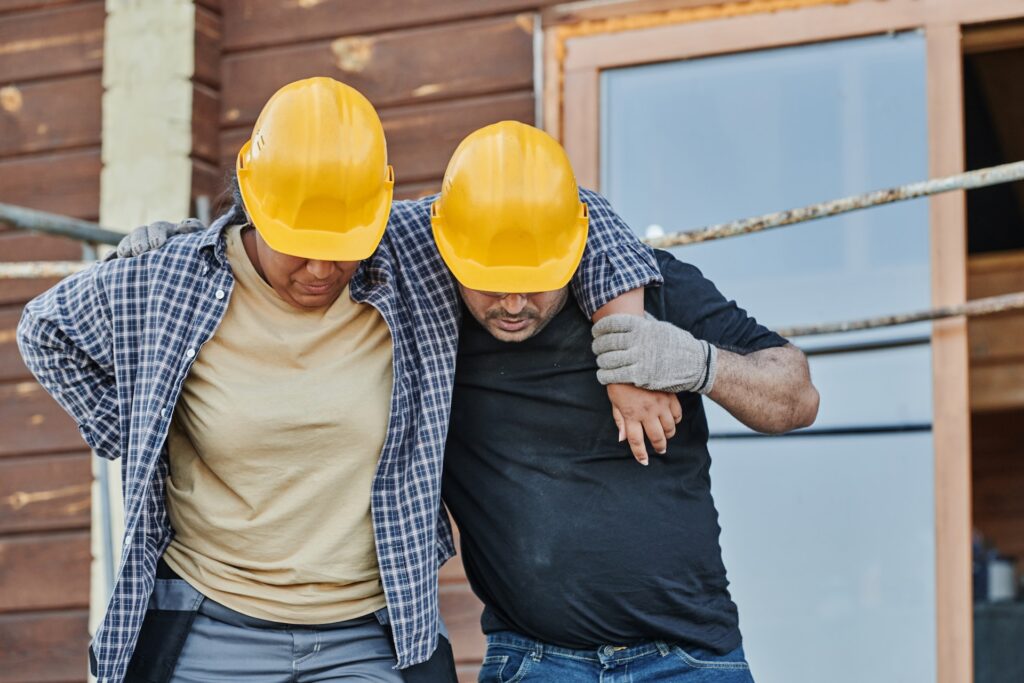
Every day, normal people face extraordinarily dangerous circumstances that can leave them seriously injured, or even dead. From misdiagnosed medication, to slipping and falling on your apartment complex parking lot, to crossing the road and getting run over by a bus, all of these dangerous situations are everyday events that effect thousands of people.
But when you also add working a dangerous occupation, such as working on a commercial construction jobsite, your chances of being seriously injured or killed go up exponentially. Says BB&G, a Chicago work injury lawyer, around 200,000 serious workplace accidents occur in the state of Illinois alone each year. That alarming stat should give you some indication of how dangerous the workplace can be on a nationwide scale. With that in mind, millions of workers’ compensation claims are filed annually. The monies awarded for these claims are meant to replace lost wages in the workplace now that the victim can no longer work.
But how dangerous is working on a commercial construction jobsite in 2023? According to a recent report by Weeklysafety.com, one of the most important challenges general contractors and subcontractors face on a daily basis is construction worksite safety. In the U.S., every contractor is required to implement stringent safety standards and rules for every jobsite for the protection of their workers, and to maintain sufficient contractor’s insurance which is engineered to cover any potential liabilities.
If you own a general contracting company or subcontract for far larger firms, there are a number of specific construction site risks you need to be aware of to protect your bottom line and your workforce. A single viable worker’s compensation claim can cost your company hundreds of thousands of dollars or more.
Table of Contents
Jobsite Slips and Falls
It’s a fact that every year slip and fall incidents on commercial construction sites account for one third of all construction-related deaths. Regardless that slip and fall injuries are always on the mind of workers, contractors are forced to deal with the possibility of them happening every working day.
The best thing for general contractors and subcontractors can do to minimize casualties from slip and fall incidents is to provide workers with personal protective equipment. They also need to make certain they receive proper training on the equipment’s use.
Keep in mind that a fall of only 5 to 10 feet above a hard surface is enough to paralyze a man for life or kill him. That’s why work areas 6 feet above the surface need to contain protective equipment such as safety arrest systems, covers, restraints, guardrails, and more. Routine checks on construction site surfaces, ladders, scaffolding, walkways, elevators, etc. should be conducted to make certain they meet the required stability and OSHA safety requirements.
Heavy Job Site Equipment
Heavy equipment is a commercial construction jobsite reality. But their presence represents a serious hazard on the ever-changing jobsite. The large amount of vehicles, heavy equipment like excavators, dump-trucks, concrete pumps, backhoes, cranes, and more that mix with human workers on uneven terrain while sometimes carrying heavy loads, poses a major risk to everyone on site.
That said, being struck or run over by heavy equipment is said to be the second major cause of construction site deaths and workers liability cases. But several crucial steps can be taken to protect the workforce and keep them safe from moving objects and vehicles.
First, everyone must wear protective head gear like hardhats at all times. Workers must also don bright, high-visibility clothing and vests. Finally, only those employees who are properly trained in the use of heavy equipment, and possess the certification to prove it, should be allowed on the jobsite.
Jobsite Trenches and Excavation
Claims Weeklysafety.com, many commercial construction workers get seriously injured or killed in trenching and excavation mishaps every year. They literally get buried alive. Because of the amount of serious risk to workers, contractors need to execute a proper plan and also implement the right precautions to prevent collapse prior to beginning any work that revolved around trenching and digging.
Additional measures need to be taken to make certain trenches are fully secure, especially when dealing with loose earth or sand. The measures should include frequent inspections before and after the eight-hour shift, and the installation of professionally engineered protective systems and wall supports for trenches that run deep.
More importantly, workers need to know what to do should a trench cave in on them. Dying by being buried alive is not a pleasant experience, not to mention the expensive lawsuits and liability claims that would follow.
